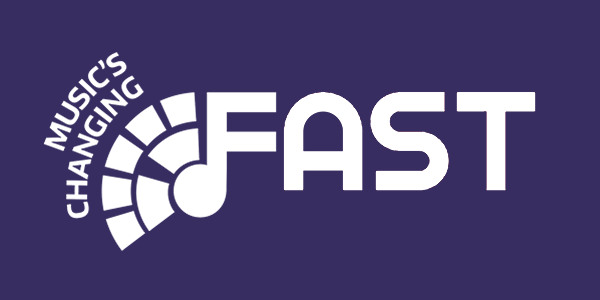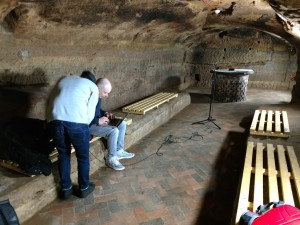Over the summer Adrian Hazzard from the Mixed Reality Lab (Nottingham) spent some time with Robert Thomas. Robert is a leading music composer and experience designer with an extensive track record in the creation of music which adapts in real-time to the listeners situation – like a soundtrack to your life.
Robert has collaborated with Massive Attack, Imogen Heap, Hans Zimmer, Ben Burtt, Richard King, Tom Holkenborg, Carl Craig, Air, Bookashade, Jimmy Edgar, Mel Wesson, Little Boots, Chiddy Bang, Console, Sophie Barker (Zero 7) and Kirsty Hawkshaw (Opus III, Orbital, Tiesto) to name a few. Robert uses a range of techniques and approaches from adaptive systems, algorithmic, generative, stochastic composition, procedural generation and machine learning / artificial intelligence.
An on-going thread of Adrian’s FAST research seeks to understand of how artists, such as Robert, approach the design, composition, and realisation of such adaptive audio experiences. To study these processes at first hand Adrian invited Robert to create a prototype adaptive audio experience.
Robert, who was supported by his colleague Franky Redente, was presented with an open design brief, and after a process of discussion and research they decided to create a locative audio ‘app’ for Nottingham City Centre, where playback of the audio responds to a listener’s movements and orientation. An interesting feature of Nottingham City Centre are the caves that sprawl under the city’s streets. Intrigued by this, Robert used the caves as the principle design feature for this audio walk: “There must be all kinds of stories of people’s lives who lived in or above those caves which are lost. We don’t really have that much information about the caves’ stories in detail, so imagining people’s lives in there might be interesting”. Building on this narrative, Robert wanted listeners to “hear below them into the underbelly of Nottingham”. The finished design presents a mixture of sound design elements and tense, textural music that represents the dark hidden world beneath, accompanying users as they walk around the city’s streets. One element of this audio treatment is dripping water panned in 3D that acts as an audio marker. By following the spatial placement of these drips (as sensed by a mobile phone’s compass sensor), listeners are guided along the streets to specific locales situated above the presence of a cave. Once a cave is reached listeners are greeted with rich arrangements of music composed by Robert, which portray these ‘lost’ stories.
Robert and Franky visited Nottingham for a couple of days, walking the streets and visiting the caves, where they recorded the ambient sound within them (such as the sound of dripping water) and also capturing impulse responses of the caves natural reverberation. Using these elements to drive the composition and authoring of the completed app.
While in Nottingham, Robert also visited the Mixed Reality Lab and gave a fascinating talk about his work, the challenges of music interaction design, alongside some example of his compositional approach using Pure Data.
If you would like to find out more about Robert Thomas and his work, follow the link here to his website – http://robertthomassound.com/



